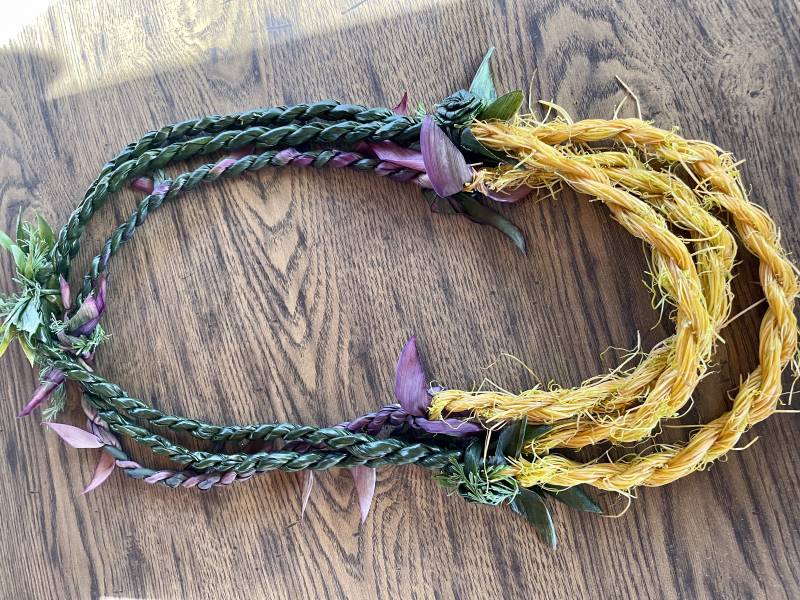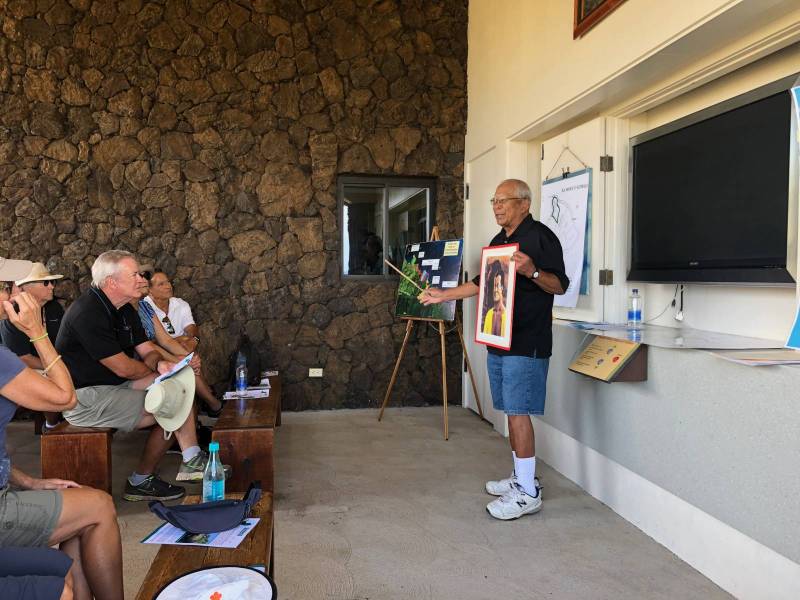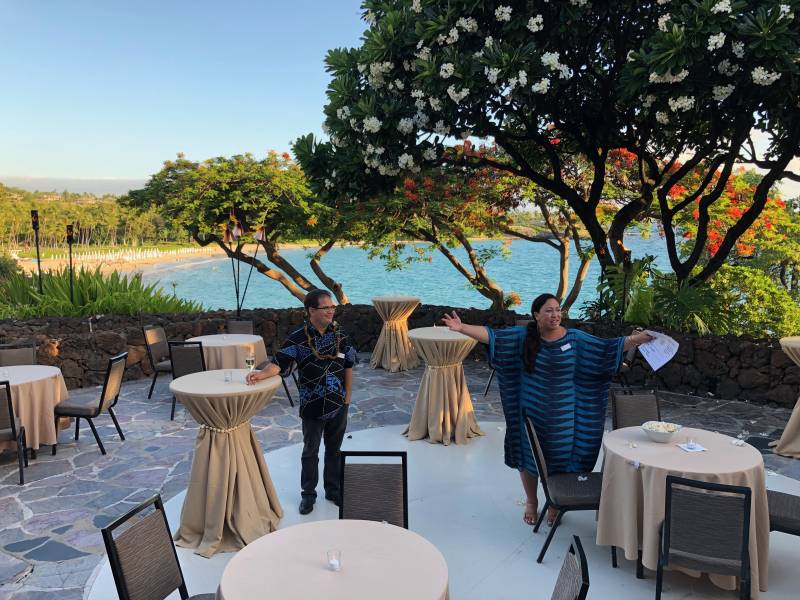I have explained before that there is no word in Hawaiian for “property” in the sense of real estate. And while ʻāina (please fill in the missing kahako) is usually translated as “land,” it means much more. In that earlier post, I talk about the relationship between land and people, and about responsibility or kuleana.
Since writing that blog post, I have found a slightly refined way to talk about the difference between thinking of land or place as real property and thinking of it as ʻāina. That is what I want to explain in this post and Iʻll get back around to that. But letʻs take a circuitous route as you are likely reading this someplace far from Hawaiʻi, and I would like to give you a chance to arrive here with me.
I started this blog post on May 1, 2023 — and as may have heard, “May Day is Lei Day in Hawaiʻi.” Wear a lei, make a lei, give a lei. I would like to use this post to wili (twist together) and give virtual lei to two of my mentors in thinking about conservation and ʻāina.

This prize winning lei combines different colors of laʻi (ti leaves) with kaunaoa, the beautiful flowering vine endemic to Hawaiʻi.
Thinking About Lei, Remembering Fred Cachola – One of My Mentors in This Conservation Work
Among the beautiful lei I admired last weekend, but did not think it was appropriate to photograph, were lei of kukui leaf that adorned the altar for the Celebration of Life of one of my mentors in this world of ʻāīna protection and conservation, Fred Cachola.

Fred Cachola educating some resort homeowners with interest in conserving Kohala Coast properties, on a field trip we put together in 2019.
We met here in Kohala where Fred was born. He cared deeply about the wahi pana or storied places we were working together to preserve. But he also had a passion for making sure communities knew and remembered all the stories of their places and place names, not just the “important” ones — or as I would say, those with obvious conservation values. When I bring buyers to Kohala, whether for “regular” real estate or for conservation listings, I usually have them meet me at the statue of Kamehameha I in Kapaʻau and begin by telling stories of Kohala, many of which I first heard from Fred.
Fred was mentored by extraordinary people, and developed a lifelong passion for mentoring others. He was emailing me his coaching and encouragement up until a couple of weeks before his passing. He helped shape my thinking about conservation as more than putting restrictions against development on land. He maintained we “should not limit our actions to preserving “places”, but also commit to perpetuating the cultural “processes” that are driven and generated by those places — which therefore gives them the cultural significance that make them so special as Wahi Kupuna.”
On the One Hand, Property. On the Other Hand, ʻAina.

Laura Kaʻakua welcomes Board members and supporters to Hawaii Land Trust event at Mauna Kea Beach Resort
My second lei of mahalo goes to another of my friends and mentors, Laura Kaʻakua, who recently transitioned from being CEO of Hawaii Land Trust to become Deputy at the State Department of Land and Natural Resources.
Laura taught me to describe how conservation easements work by holding up my hand while explaining that legally “real property” is defined as a bundle of rights. Try it with me. Hold up your right hand with the palm facing you and turn down one finger at a time, each finger represent a right that could be given up by deed restriction to protect conservation values — the right to build a home, or the right to subdivide, or the right to use for anything but agriculture, as examples.
Now hold up your left hand with the palm facing you and the fingers held together tightly. Instead of consisting of a bundle of rights, ʻāina is a bundle of relationships and responsibilities.
The thing is that rights can be bought, sold, transferred (and are subject to governmental land use restrictions such as zoning or building codes). But for people in Hawaiʻi connected to a place as lineal descendants or by virtue of the cultural practice associated with that place , their relationships and responsibilities continue whether or not they have any legal property rights. Property law in Hawaiʻi recognizes this to a limited extent by protecting the use of land for traditional and customary practices as a right.
Both of these frameworks are useful in our Conservation and Legacy Lands practice. We use the framework of property rights to protect wahi pana, places with conservation values. We use the framework of ʻāina to understand why those places need protection, and how to provide for their proper stewardship in perpetuity.

Leave your opinion here. Please be nice. Your Email address will be kept private, this form is secure and we never spam you.